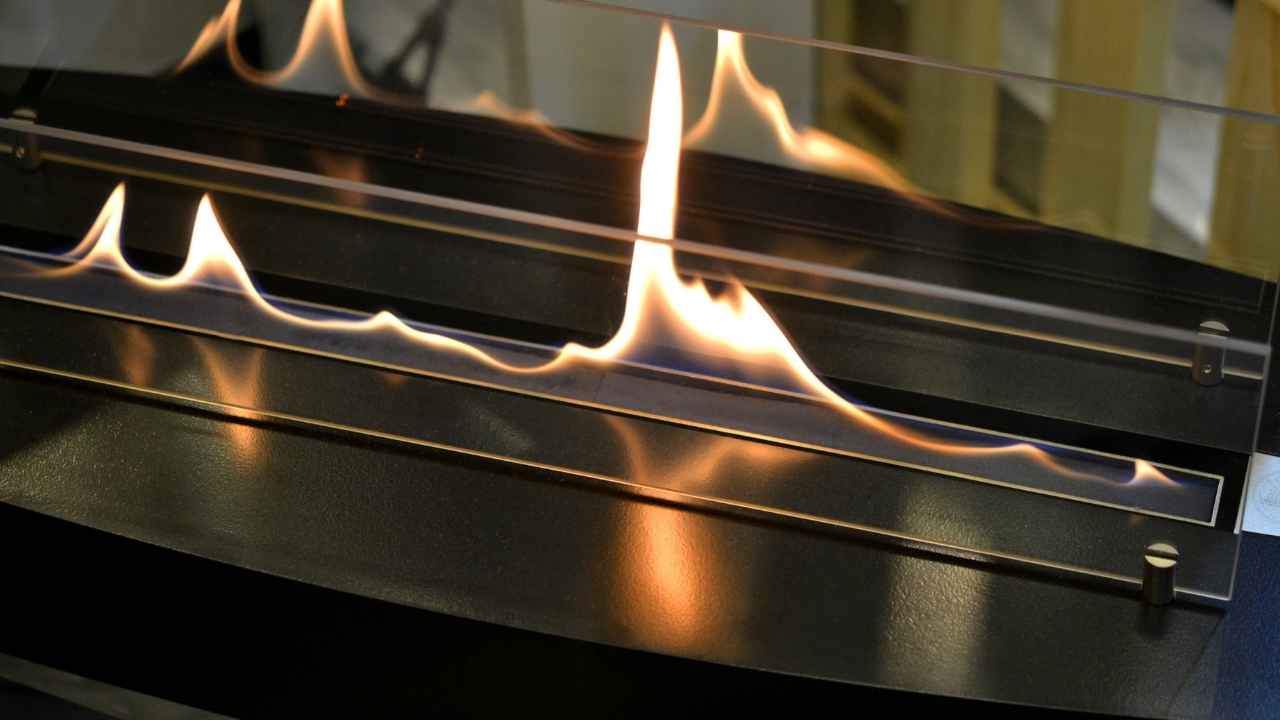

As an increasing number of people acknowledge the urgent need to protect the environment, Bioethanol stoves are growing rapidly in their popularity. Bioethanol stoves are also popular because they can be safely installed and used without a chimney. Most apartments and many houses today are built without chimneys, allowing homeowners to enjoy a living flame fire when otherwise it wouldn’t be possible.
Bioethanol stoves are a safe and environmentally friendly alternative to other types of decorative domestic heating. A bioethanol fire burns fuel extracted from plants during a complete combustion process. It does not generate harmful emissions, smoke, or fumes, so using one is a responsible and convenient choice.
In this article, we discuss in detail what bioethanol stoves are and their benefits.
What is Bio Ethanol?
Bioethanol fuel is a sustainable fuel derived from a wide range of crops, including sugar cane and maize. It generates a very clean form of heat without causing any harmful emissions.
Bioethanol fuel can be distinguished from traditional fossil fuels as it is sustainably sourced and does not generate any harmful emissions.
Benefits of Bioethanol Stoves
Bioethanol stoves are an excellent alternative for those people who don’t want to use a wood burning stove and can’t instal one. The provide an entirely realistic flame picture and generate a significant level of heat.
Bioethanol Stove Environmental Benefits
- 1. Lower carbon footprint – Bioethanol fuel is produced from crops and is a sustainable source of heat with an exponentially lower carbon footprint than that of conventional fossil fuels.
- 2. Renewable source of energy – Using bioethanol is not depleting reserves of fossil fuels as it uses crops which can be grown.
- 3. Reduction in air pollutants – Burning bioethanol fuel does not result in the release of the type of harmful particulate emissions that are produced when solid fuels are burnt.
Bioethanol Stoves Are Aesthetic & Look Good
Bioethanol stoves are available in both traditional and contemporary styles. As many new homes are built without chimneys contemporary designs of bioethanol stoves are especially popular.
Having a living flame transforms the ambience of a room and provides it with a focal point. Bioethanol stoves produce an authentic and attractive flame pattern that replicates the look of a wood burning stove very closely and also generates warmth in a room.
Bioethanol stoves are available in a wide range of traditional and contemporary styles many of which replicate the most popular styles of log burners.
Bioethanol Stoves Are Convenient & Can Be Used In Most Homes
- With bioethanol stoves there is no need for a chimney or flue. Installation of a bioethanol stove is simple without the need for a chimney as the fire doesn’t generate any smoke or gases needing to be removed from the room.
Installation is also simple. The best bioethanol fires are remote controlled and have various safety features and these fires require an adjacent electric supply.
Bioethanol stoves are also safe. Safety features you can have on an electric bio-ethanol stove would include a leak detection system, which would activate in the event there was a leak and the appliance will shut itself down, and an overflow system, which when activated would shut the appliance off. There would also be a safety switch to prevent refuelling the appliance while it is in operation. A manual bio-ethanol stove would not have any safety features.
Bioethanol Stove Types
- Bioethanol stoves have emerged as a fusion of innovation, design, and sustainability. As we navigate through the realm of these stoves, we’ll uncover the distinct types available, each catering to varied preferences and spatial needs.
Freestanding Bioethanol Stoves
Freestanding bioethanol stoves are independent, self-supporting units that use bioethanol fuel for heating without the need for external fixtures or connections. They are a popular choice due to their versatility and stunning design.
Chesneys manufacture a range of bioethanol stoves in both traditional and modern styles. These can be positioned anywhere providing there is an electric supply available and the recommended distance to combustibles are adhered to. They also offer an electric refilling system.
Wall Mounted Appliances
Wall mounted bioethanol stoves offer a modern and space-saving heating solution. These stoves, free from the requirement of a flue, provide flexibility in installation options. However, it’s crucial to ensure that the construction surrounding the stove comprises non-combustible materials. Construction of the surrounding area needs to be from non-combustible materials and the recommended distance to combustibles needs to be adhered to, as per the manual.
Chesneys manufacture a range of remote controlled bioethanol linear burners that can be inset into a wall or chimneybreast for a modern style of fireplace.
Tabletop Burners
Tabletop burners, characterized by their compactness and portability, are a prime choice for specific scenarios. These burners, especially suited for outdoor settings, make for a striking centerpiece on patios or terraces. Chesney’s supply table top bio ethanol burners in the form of outdoor linear burners set into a table on a patio or terrace.
Bioethanol Fuel Efficiency and Running Costs

Bioethanol Stave Safety Considerations
- Bioethanol stoves, while epitomizing modern heating solutions, come with their own set of safety considerations. Ensuring a harmonious balance between aesthetics, functionality, and safety is paramount. In this guide, we’ll explore essential safety aspects, from ventilation requirements to proper installation and storage protocols
Proper Ventilation
Ventilation ensures a continuous supply of fresh air with sufficient oxygen to support combustion. The stove may not burn properly without proper ventilation, leading to incomplete combustion and potentially producing harmful byproducts like carbon monoxide (CO). Always follow the manufacturers’ guidance on room sizing and ventilation requirements when installing an appliance.
Lack of ventilation can lead to:
- A weak or flickering flame as it struggles to get enough oxygen for proper combustion.
- Soot build-up on the walls, ceiling, or the appliance itself.
- Unusual odors due to the accumulation of combustion byproducts.
- Difficulty breathing and headaches if there is a build-up of harmful gases, such as carbon monoxide
Bioethanol Stove Installation
The appliance will have been designed to operate safely in specific environments to achieve the best results in terms of appearance, heat output, and efficiency. If not installed correctly, the appliance may not operate as designed, which could cause damage or injury.
Bioethanol Storage
Bioethanol fuel is classified as a Class 1B flammable liquid, and it is essential to familiarise yourself with the regulations and manufacturers’ recommendations for safe storage. The fuel should only be stored in the original container and must be stored at a minimum distance of 200cm from where the bioethanol stove is located.
Usage Guidelines
For a remote-controlled bioethanol appliance, the igniting and extinguishing process will be controlled by the appliance. Due to the safety features, it will only ignite when it is safe to do so.
Best Practices for Maintenance
It is important to check the burner channel regularly for any dust or debris build-up as this could affect the operation of the appliance. If any is found, use a vacuum cleaner and take care not to interfere with the sensors. Cleaning products must not be used on the appliance.
We recommend turning on the appliance at least once a month for 10 minutes, even during summer months, to check it is operating correctly. Please also check battery levels in the handset.
If the appliance is not functioning correctly and all troubleshooting methods have been attempted, contact your installer or the store you purchased the product from.
Bioethanol Stoves: A Green, Safe, and Aesthetic Choice
Bioethanol stoves are a sustainable and chic alternative to conventional heating systems. With the ongoing environmental concerns, they offer a chimney-free solution, making them a viable option for modern homes lacking traditional infrastructure. These stoves utilize bioethanol, a clean-burning fuel from crops like sugar cane and maize. Not only do they support a reduced carbon footprint and decreased air pollutants, but they also cater to aesthetic preferences with designs ranging from traditional to contemporary.
Safety is paramount, especially with heating solutions. Proper ventilation is essential to prevent harmful byproducts and ensure optimal combustion. Attention to the installation environment, fuel storage, and maintenance can also avert potential hazards. As with any device, regular checks and professional consultations are advised if issues arise.
Ultimately, bioethanol stoves encapsulate an intersection of design, sustainability, and safety. As you consider a heating solution that aligns with both your aesthetic desires and eco-consciousness, bioethanol stoves stand out as a compelling choice.
If you’re looking for a sustainable way to heat your home, check out Chesney’s range of bioethanol stoves.
